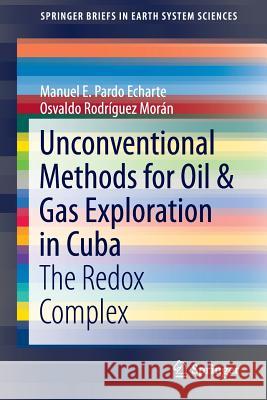Unconventional Methods for Oil & Gas Exploration in Cuba: The Redox Complex » książka
Unconventional Methods for Oil & Gas Exploration in Cuba: The Redox Complex
ISBN-13: 9783319280158 / Angielski / Miękka / 2015 / 69 str.
This book studies the "Redox Complex," a complex of unconventional geophysical-geochemical exploration techniques used for the indirect detection, characterization and evaluation of various metal targets, while also illustrating selected applications of unconventional geophysical-geochemical methods for oil exploration in Cuba. This complex is successfully applied in various fields: oil & gas and metal ores exploration; studies of oil and metal contaminants in soils; and the search for metallic archaeological burials. The use of these techniques is intended to complement the conventional prospecting complex by reducing areas and/or facilitating the selection of the most favorable targets, improving the economical-geological effectiveness of investigations in the process. Further, the Redox Complex can be implemented without physical or chemical damage to the environment. The book's primary goals are to: 1) outline the general features characterizing the processes of metal mobilization, transport and accumulation on surficial media; 2) outline the methodology, data interpretation and mathematical apparatus that support quantitative estimates of the Redox Complex; and 3) design a database and applications system (the Redox System) to address storage processes, reports, graphics and the corresponding interpretations of the Redox Complex in a quick and reliable way. To do so, it examines the regions of Havana-Matanzas (Varadero Oil Field, Cantel Oil Field and Madruga Prospect) and Ciego de Avila (Pina Oil Field, Cristales Oil Field, Jatibonico Oil Field, Jatibonico Oeste Prospect and Cacahual Prospect). The methods covered include, in some cases, airborne gamma spectrometry (K/eTh ratio) beside ORP and, in others, the Redox Complex with reduced or standard attributes. In all cases, the anomalous complex of interest corresponds to the correlation of the minimum K/eTh ratio with minimum ORP and, in the case of the Redox Complex, Magnetic Susceptibility highs with ORP lows, Spectral Reflectance lows and maximum Content of Chemical Elements (V, Ni, Pb, Zn, Fe).











